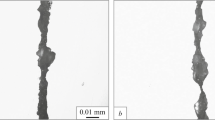Abstract
The purpose of this paper is to conduct a feasibility study to examine defects of turnouts using three-dimensional scanning. The turnout defect detection tools are rare and expensive. Three-dimensional scan of a new and a damaged turnout using Kinect device has been taken. Since the boundary condition in each turnout blade is different, image processing algorithm should begin with noise reduction and then find the damage location comparing the new and the damaged sample. Moreover, failure mode and effects analysis approach have been used for risk analysis. This method indicates the maintenance priority for each turnout. As a result, risk priority number calculated for maintenance management relies on reliability derived for each equipment. By this means, resource planning and maintenance system are optimized. Finally, failure forecasting related to local condition is possible.
Access this chapter
Tax calculation will be finalised at checkout
Purchases are for personal use only
Similar content being viewed by others
References
Aguilar J, Lope M, Torres F, Blesa A (2005) Development of a stereo vision system for non-contact railway concrete sleepers measurement based in holographic optical elements. Measurement 38(2):154–165
An M, Chen Y, Baker CJ (2011) A fuzzy reasoning and fuzzy-analytical hierarchy process based approach to the process of railway risk information: a railway risk management system. Inf Sci 181(18):3946–3966
Anderson R, Barkan C (2004) Railroad accident rates for use in transportation risk analysis. Transp Res Record J Transp Res Board 1863:88–98
Babenko P (2009) Visual inspection of railroad tracks. Doctoral dissertation, University of Central Florida Orlando, Florida
Bachinsky GS (1995) Electronic BAR Gauge: a customized optical rail profile measurement system for rail-grinding applications. In: Nondestructive evaluation of aging infrastructure. International Society for Optics and Photonics, pp 52–63
Bitsch F (2002) Requirements on methods and techniques in perspective to approval process for railway systems. In: 2nd international workshop on integration of specification techniques for applications in engineering (INT’02), vol 193, Grenoble, France
Deustchl E, Gasser C, Niel A, Werschoning J (2004) Defect detection on rail surfaces by a vision based system. In: IEEE intelligent vehicles symposium, Parma, Italy
Dutta T (2012) Evaluation of the Kinect™ sensor for 3-D kinematic measurement in the workplace. Appl Ergon 43(4):645–649
Euston TL, Zarembski AM, Hartsough CM, Palese JW (2012) Analysis of wheel-rail contact stresses through a turnout. In: 2012 joint rail conference. American Society of Mechanical Engineers, pp 1–8
Fathollahi Z (2015) Turnout frog point damage detection by image processing. Master’s thesis, Amirkabir University of Technology
Fazeli MH (2013) Ballast dimensional index. Master’s thesis, Iran University of Science & Technology
Gao X, Yu L, Yang Z (2015) Subway lining segment faulting detection based on Kinect sensor. In: 2015 IEEE international conference on mechatronics and automation (ICMA). IEEE, pp 1076–1081
Liu X, Saat M, Barkan C (2012) Analysis of causes of major train derailment and their effect on accident rates. Transp Res Record J Transp Res Board 2289:154–163
Mandriota C, Nitti M, Ancona N, Stella E, Distante A (2004) Filter-based feature selection for rail defect detection. Mach Vision Appl 15(4):179–185
Marino F, Distante A, Mazzeo PL, Stella E (2007) A real-time visual inspection system for railway maintenance: automatic hexagonal-headed bolts detection. IEEE Trans Syst Man Cybern Part C (Appl Rev) 37(3):418–428
Nederlof C, Dings P (2010) Monitoring track condition to improve asset management. UIC WG track condition monitoring synthesis report, International Union of Railways, Paris
Nielsen JC, Pålsson BA, Torstensson PT (2016) Turnout panel design based on simulation of accumulated rail damage in a railway turnout. Wear 366:241–248
Nissen A (2009) Classification and cost analysis of turnouts and crossings for the Swedish railway: a case study. J Qual Maintenance Eng 15(2):202–220
Papaeliass M, Roberts C, Davis L (2008) A review on non-destructive evaluation of rails. Rail Rapid Transit 367
Parkinson HJ, Thompson G, Iwnicki S (1998) The development of an FMEA methodology for rolling stock remanufacture and refurbishment. In ImechE Seminar Publication, vol 20, pp 55–66
Podofillini L, Zio E, Vatn J (2006) Risk-informed optimisation of railway tracks inspection and maintenance procedures. Reliab Eng Syst Saf 91(1):20–35
Stella E, Mazzeo P, Nitti M, Cicirelli G, Distante A, Orazio T (2002) Visual recognition of missing fastening elements for railroad maintenance. In: IEEE-ITSC international conference on intelligent transportation systems
Swely K, Reiff R (2000) An assessment of Railtrack’s methods for managing broken and defective rail. In: Rail failure assessment for the office of the rail regulator conference
UIC Project Turnouts and Crossing (2011) Inspection of turnouts and crossing state of the art report-20 preliminary report. International Union of Railways (UIC)
Zarembski AM, Euston TL, Palese JW (2013) U.S. Patent No. 8,345,948. U.S. Patent and Trademark Office, Washington, DC
Zhao J, Chan A, Burrow M (2007) Probabilistic model for predicting rail breaks and controlling risk of derailment. Transp Res Record J Transp Res Board 1995:76–83
Zwanenburg WJ (2009) Modelling degradation processes of turnouts and crossings for maintenance and renewal planning on the Swiss railway network
Author information
Authors and Affiliations
Corresponding author
Editor information
Editors and Affiliations
Rights and permissions
Copyright information
© 2019 Springer International Publishing AG, part of Springer Nature
About this paper
Cite this paper
Ebadi, M., Bagheri, M., Lajevardi, M.S., Haas, B. (2019). Defect Detection of Railway Turnout Using 3D Scanning. In: Fraszczyk, A., Marinov, M. (eds) Sustainable Rail Transport. Lecture Notes in Mobility. Springer, Cham. https://doi.org/10.1007/978-3-319-78544-8_1
Download citation
DOI: https://doi.org/10.1007/978-3-319-78544-8_1
Published:
Publisher Name: Springer, Cham
Print ISBN: 978-3-319-78543-1
Online ISBN: 978-3-319-78544-8
eBook Packages: EngineeringEngineering (R0)




